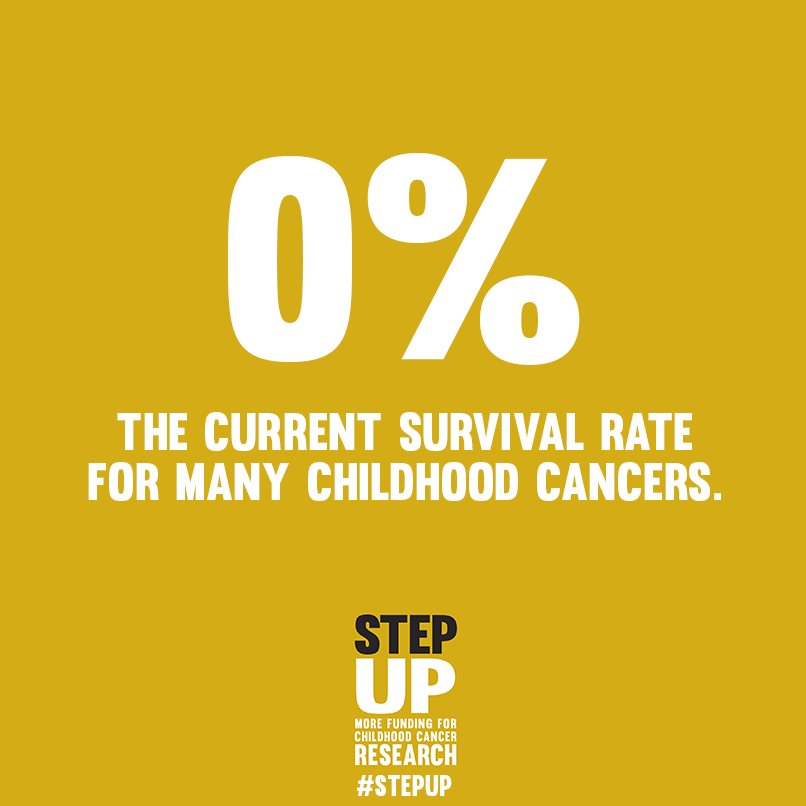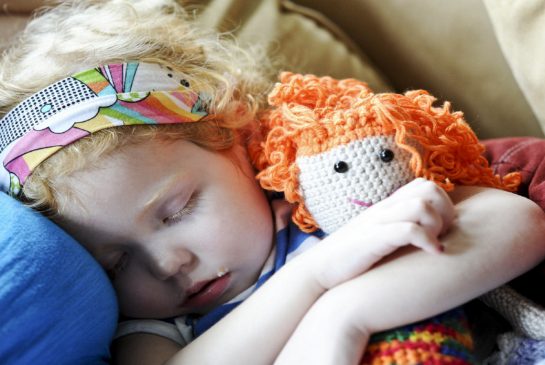0% – The Current Survival Rate for Many Childhood Cancers

Day 4: 0% – The Current Survival Rate for Most Childhood Cancers
“Imagine that you had a cherubic, mischievous, energetic and moody two year old with flashing blue eyes, a brilliant smile and curly red hair. Imagine that each morning she got you up at 5:15 a.m. by standing up in her crib and shouting, “Maaamaaa, I’m awaaaake! Maaamaaa, where are you?” Imagine if when you went into her room she threw both her arms up towards you in a great big hug and chattered her way into the living room, telling you she wanted Cheerios for breakfast…with banana…and milk…and can we paint now…and watch Caillou. Imagine if when you tried to get her dressed in the morning, she ran away from you laughing, no matter how exasperated you got. Imagine if she insisted on picking out her own clothes, and you let her, rather than fight about it. Imagine if she could sing the entire theme song to “Golden Girls,” could go down the slide on her own, could pee on the potty, catch a ball, dance and chase her friends. Imagine when you step off the subway after work and walk into her daycare room, all the kids turn to look at who has entered the room, and when she sees you she flashes the most brilliant smile and comes running with her arms up, saying “Mama! Mama!” Imagine if no matter how many times she had a tantrum and demanded things from you and exhausted you, she ended each night with a snuggle and a kiss and you breathed in the smell of her curls and felt warm happiness all over. Imagine if you could never love anything as much as you loved your first born child, your dream come true, your daughter.

Now imagine it is 9 months later. Imagine she is lying next to you in your bed. She can’t walk. She can’t use her arms or hands. She can’t hold her head up. She can’t see the television. She can’t tell you she loves you. She can’t hug you. She is lying in the bed sound asleep, but coughing on her own saliva, which she chokes on because she can barely swallow. Imagine she was dying and there was nothing you could do to change it. Imagine if you knew that one day soon you would never get to see her again. Never see her smile, feel her hand slip into yours, kiss her warm cheek, feel her sigh into your chest.
That is the simple reality of what we are living with. And it’s hard. No matter how many good things happen to us, no matter how much we believe in a bright future for ourselves and a time of healing, we are being tortured. No matter how well or easily we manage to get through the days, to talk with our friends, to laugh and joke and even fight sometimes, we are broken inside. It’s a very strange way to live. We need to not focus only on what we are losing, but on all we have gained, but despair creeps in nonetheless.
What is keeping us moving forward right now, even when our hearts are completely broken, is watching how our daughter has chosen to live her short life. How she treats each day as a new adventure; pushes herself both physically and mentally to ensure that she accomplishes what she wants on that particular day. Sometimes it’s something big—painting with her mouth and visiting the pigs at the farm. And sometimes it’s just being able to mouth the words “ice cream,” and then napping most of the day. But she is always true to herself, and even though things are hard for her, she ignores the barriers of DIPG and chooses to forge her own path. Most importantly, she believes that when life gives you a hundred reasons to cry, you need to find a thousand reasons to smile…And in my own smiles, I have become familiar with the bittersweet taste of getting to parent my precious daughter—the best experience in the world, but like a spring day that is much, much, too short.”
DIPG is an acronym no parent should have to learn. DIPG, or Diffuse Intrinsic Pontine Glioma, is a highly malignant, fast-growing form of childhood brain cancer that disables the functioning of the nervous system. Because it develops on the brainstem and is stubbornly resistance to chemotherapy, the prognosis for children with DIPG is extremely poor: less than 10% of children diagnosed with DIPG survive longer than 18 months, and long-term survival is almost unheard of. In fact, DIPG and other childhood brain tumors are among the cancers with the worst survival rates, and it is easy to see why. Many tumors develop in areas of the brain that make removing the tumor surgically impossible without damaging critical brain functioning, and many forms of chemotherapy, whether administered orally or though the bloodstream, will not reach some areas of the brain, rendering them ineffective. Sadly, “miracle cures” for other forms of cancers (usually adult) have not had any real impact on survival rates for childhood brain tumors; in fact, there is not been a significant medical development in the treatment of these most deadly childhood cancers in more than 30 years.
When we hear of a child who has been diagnosed with “cancer”, we immediately want to ask “What’s the prognosis?” Unfortunately, the answer is just not that simple. There are hundreds of different types and subtypes of childhood cancers, and each one presents different treatment options and survivability rates. As in the case of many brain tumors, the specific location of the cancer can have a huge impact on long-term prognosis. Another critical factor affecting long-term survivorship is when the cancer is diagnosed, and how far the disease has progressed at the time of diagnosis. Childhood cancers tend to be more aggressive than adult cancers, growing and spreading very quickly to different areas of the body. Complicating matters even further is the fact that children are not able to describe their symptoms, or their symptoms are commonly misdiagnosed as any number of normal childhood diseases. For instance, neuroblastoma (a solid tumor that usually develops in the adrenal glands) is most common in children under 5, the population least able to tell us something is wrong. Because it is often not discovered until it has spread, especially in infants under the age of 1, its long-term survival rate is only 30%. Another excellent example is osteosarcoma, a cancer that develops in the long bones of the body (often upper arms or legs): when caught in the early stages, osteosarcoma usually responds well to surgery and other treatments and has a long-term survivor rate of almost 80%; however, once it metastasizes, that rate drops to less than 30%.
“What’s the prognosis?” As too many parents have learned, the specific answer for their child involves a complicated medical assessment conducted by physicians and specialists too numerous to count. For us, however, there is really one very simple answer: “not good enough.” Too many forms of childhood cancer have a 0% survival rate, and the fault is ours. Give the smallest victims of childhood cancer a greater chance: join us as we Step Up to increase awareness of the lack of funding for research on childhood cancers. How can you help? That answer, too, is easy. Share a post on Facebook and Twitter and ask a friend or two to share it on their sites. Contact your local congressmen: they have the power to increase federal funding for childhood cancer research, and the responsibility to use it. Together, we can give funding research for cures for childhood cancers the priority it should to be.
To read more about Stella Joy’s story, click here and these two beautifully written articles:
http://www.thestar.com/news/gta/2012/12/08/stella_joy_every_moment_precious.html
http://www.thestar.com/news/gta/stella.html
There are many ways for you to help:
- A little bird will shout from the rooftops that kids deserve to be a higher priority. Tweet your members of Congress usingSoundOff with a new message each day. Here is an example tweet:
- I just sent a #SoundOff to my Reps in Congress about #StepUp. Would you hit this link and do it too? http://www.soundoffatcongress.org/nY2f
- Posting to Twitter on your own? That’s great! Please use the #StepUp hashtag so we can track our success. Here are some example posts:
- Step Up: More Funding for #ChildhoodCancer Research #StepUp http://www.soundoffatcongress.org/nY2f
- Children with cancer deserve more federal research funding. Tell Congress to #StepUp: http://www.soundoffatcongress.org/nY2f
- Increase appropriations for NCI #StepUp – More Funding for Childhood Cancer Research http://www.soundoffatcongress.org/nY2f
- Help us virtually storm Congress: Ask your Reps to #StepUp & support more funding for childhood cancer research. Please share!
- Email your Representatives (by clicking either of these links: House and Congress) and ask them to increase appropriations for NCI and reauthorize the Carolyn Pryce Walker Act.
- Change your Facebook and Twitter profile photos to the “StepUp” image
- Directly ask three friends to share the message with their representatives



